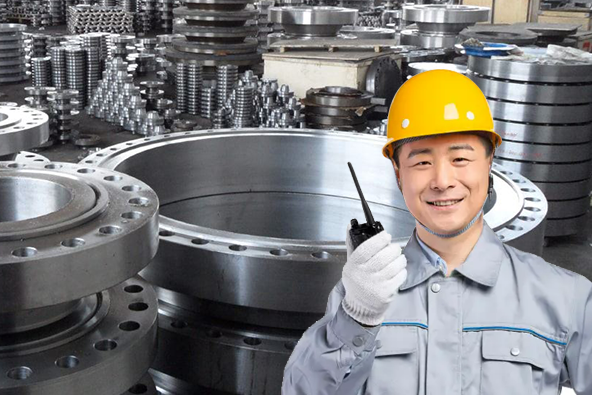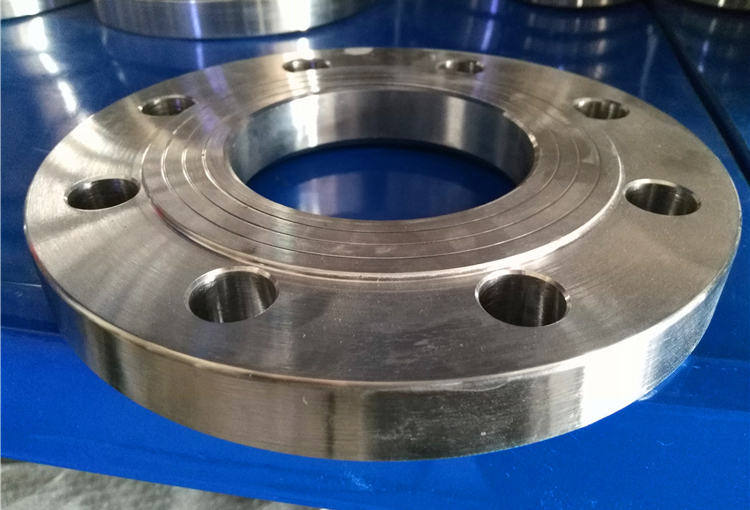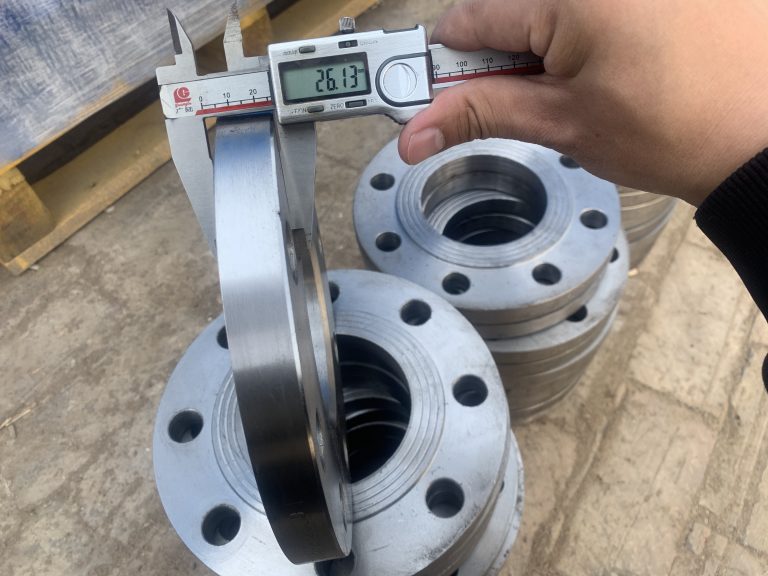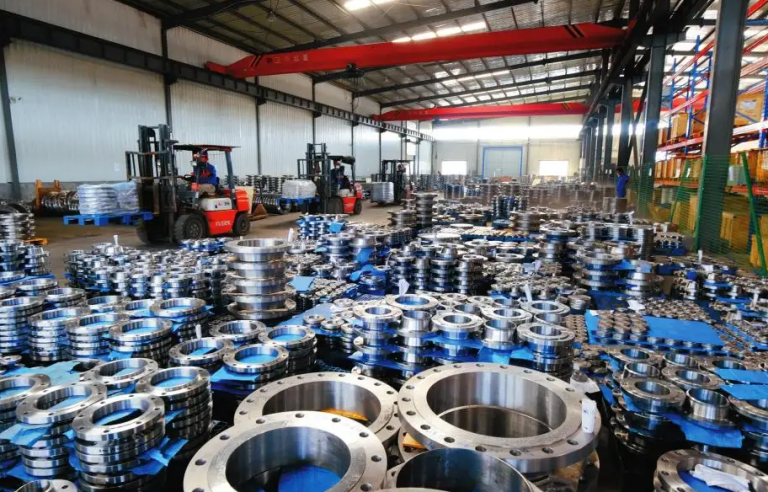In the dynamic realm of industrial applications, flanges stand as crucial components, serving as linchpins in the seamless functioning of diverse systems. As connectors, they bridge gaps, ensuring the integrity of pipelines and equipment. However, a pervasive challenge prevails — the nuanced task of discerning between different flange classes. This introductory section aims to shed light on the pivotal role of flanges in industrial contexts while acknowledging the complexities associated with distinguishing between classes such as 150, 300, 600, and 900. Join us on a journey to unravel the intricacies of flange classification, where precision meets necessity.
Definition and Significance of Flange Classes (150, 300, 600, 900):
- Flange Classes Definition:
- Flange classes are numerical indicators assigned to flanges, representing their pressure-temperature ratings. These classes convey the flange’s capacity to withstand specific operating conditions within industrial settings.
- Significance of Flange Classes:
- Performance Calibration: Each class corresponds to a distinct set of parameters, influencing the flange’s ability to perform optimally under specific pressure and temperature conditions.
- System Compatibility: The classification system aids in categorizing flanges based on their application suitability, ensuring compatibility with diverse systems and industries.
- Safety Assurance: Flange classes serve as a safety benchmark, guiding engineers and operators in selecting components that can withstand the rigors of their intended applications.
Key Parameters Influencing Class Determination:
- Pressure Rating:
- Definition: Pressure rating indicates the maximum allowable pressure a flange can handle. It is a pivotal factor in determining the appropriate class.
- Influence: Higher pressure ratings are associated with higher flange classes, making them suitable for applications with more demanding pressure requirements.
- Temperature Rating:
- Definition: Temperature rating specifies the range within which a flange can effectively operate without compromising its structural integrity.
- Influence: Flange classes are differentiated based on their temperature tolerance, ensuring compatibility with the temperature conditions of specific industrial processes.
- Material Composition:
- Definition: The materials used in manufacturing a flange significantly impact its strength, durability, and resistance to corrosion.
- Influence: Different classes may utilize distinct materials, with higher classes often employing more robust and heat-resistant alloys to meet stringent requirements.
- Design Standards:
- Definition: Flanges are manufactured in accordance with industry standards and regulations that set criteria for dimensions, materials, and performance.
- Influence: Adherence to design standards ensures uniformity and facilitates interoperability across various systems, influencing the assignment of flange classes.
- Application Specifics:
- Definition: The intended application and environmental conditions play a crucial role in determining the appropriate flange class.
- Influence: Flange classes are tailored to match the demands of specific industries and applications, aligning with the unique requirements of each.
In summary, the definition and significance of flange classes lie in their ability to communicate crucial information about a flange’s capabilities, while key parameters like pressure and temperature ratings, material composition, adherence to design standards, and application specifics collectively influence the determination of these classes.
Physical Characteristics
150 Class Flanges:
- Physical Characteristics:
- These flanges are relatively lightweight and have thinner dimensions compared to higher-class flanges.
- They typically feature a smaller number of bolt holes, often four or eight.
- The bolt hole diameter and flange face dimensions are designed to match this class, emphasizing practicality in less demanding applications.
- 150 class flanges are suited for applications with lower pressure and temperature requirements.
300 Class Flanges:
- Physical Characteristics:
- These flanges exhibit increased thickness and weight compared to 150 class flanges, reflecting their capacity to withstand higher pressure and temperature conditions.
- The number of bolt holes and their dimensions are modified to accommodate these elevated requirements.
- 300 class flanges offer versatility and are commonly employed in a broad spectrum of industrial applications with varying demands.
600 Class Flanges:
- Physical Characteristics:
- 600 class flanges are further distinguished by substantial thickness and weight, indicating their suitability for heavy-duty applications with extreme pressure and temperature demands.
- Bolt hole dimensions and flange face specifications are meticulously designed to ensure structural integrity under rigorous conditions.
- They are typically used in applications where robustness and reliability are paramount.
900 Class Flanges:
- Physical Characteristics:
- 900 class flanges are characterized by substantial thickness and weight, making them ideal for applications demanding the utmost resilience and durability.
- The bolt hole dimensions, flange face design, and overall construction are engineered to withstand extreme pressure and temperature conditions.
- These flanges are commonly used in applications where safety and performance are critical.
Performance Factors: How Flange Class Impacts Real-World Performance
To grasp the profound implications of flange class selection, let’s delve into concrete real-world scenarios that illuminate the tangible impact of choosing the right or wrong class.
Scenario 1: Pressure and Temperature Dynamics
- Analysis: Imagine a high-pressure natural gas transmission pipeline as our backdrop. Here, flange class is not just a technicality; it’s a matter of safety. In this scenario, a 900 class flange, engineered to endure extreme pressure and temperature fluctuations, is the correct choice. Now, consider the alternative: selecting a 150 class flange to cut costs. Over time, the 150 class flange succumbs to the relentless stress, leading to a catastrophic gas leak. Downtime is inevitable, but more alarmingly, the safety of workers and the environment is compromised.
Scenario 2: Sealing Integrity
- Analysis: We shift our focus to an offshore drilling platform, where the integrity of flange seals is paramount. Harsh marine conditions demand flanges known for superior sealing properties, such as the 600 class. However, imagine a scenario where a lower-class flange is chosen. As the corrosive marine environment takes its toll, the flange’s sealing capacity diminishes. The result: oil leaks, environmental harm, and costly repairs. The consequences are not only financial but also reputational.
Scenario 3: Corrosion Resistance
- Analysis: Let’s explore a chemical processing plant where corrosive chemicals are the order of the day. The choice of flange class becomes a game-changer. Opting for a 300 class flange might seem prudent, but the corrosive environment tells a different story. Over time, corrosion takes its toll, necessitating frequent replacements and causing considerable downtime. Had a higher-class flange been selected for its superior corrosion resistance, maintenance costs would have plummeted, and operational efficiency soared.
Scenario 4: Vibration and Stress Tolerance
- Analysis: Picture a manufacturing facility filled with heavy machinery, generating constant vibrations. The need for the right flange class is palpable. A 150 class flange, chosen perhaps for its cost-effectiveness, is ill-suited to these conditions. Over time, vibrations loosen connections, resulting in unplanned shutdowns and escalating maintenance efforts. Now, contrast this with a 600 class flange, designed to withstand such rigors. With it, system stability prevails, maintenance disruptions diminish, and operational continuity thrives.
Success Story: Cost Savings and Reliability in Oil and Gas
- Analysis: A telling success story emerges from the oil and gas sector. In an environment characterized by high-pressure and high-temperature demands, a company opted for 900 class flanges, a decision driven by safety and reliability concerns. This strategic choice, though initially an investment, paid off in spades. It resulted in substantial cost savings, courtesy of reduced downtime and minimized maintenance. The choice to invest in higher-class flanges proved not just prudent but visionary.
These meticulously detailed real-world scenarios and their corresponding analyses paint a vivid picture of how flange class selection significantly impacts safety, operational effectiveness, and cost-efficiency in industrial applications. They underscore the imperative of precise flange class selection in real-world contexts.
Material Specifications: The Connection Between Flange Class and Materials
Understanding the materials used in the manufacture of different flange classes (150, 300, 600, 900) is essential for comprehending their capabilities and limitations. In this section, we will provide an overview of the materials commonly associated with each class and delve into the correlation between material quality and flange class.
Common Materials for Each Flange Class:
- 150 Class Flanges:
- Common Materials: Carbon steel and low-alloy steel are often employed for 150 class flanges. These materials offer cost-effectiveness while meeting the class’s requirements for less demanding applications.
- 300 Class Flanges:
- Common Materials: Materials like carbon steel, low-alloy steel, and some stainless steels find application in 300 class flanges. These materials provide enhanced strength and resistance to higher pressure and temperature conditions.
- 600 Class Flanges:
- Common Materials: Stainless steels, such as 316/316L, alloy steels, and low-alloy steels, are frequently used for 600 class flanges. These materials offer improved corrosion resistance and robustness for more demanding applications.
- 900 Class Flanges:
- Common Materials: For 900 class flanges, high-alloy steels, such as 904L, alloy steels, and stainless steels, are the materials of choice. These materials provide exceptional corrosion resistance and strength, making them suitable for extreme conditions.
Correlation Between Material Quality and Flange Class:
The correlation between material quality and flange class is profound, as it directly influences the flange’s performance and reliability:
- Higher Class, Higher Material Quality: Flange classes are often paired with materials that match the class’s demands. As flange class increases, the materials employed tend to be of higher quality, boasting improved characteristics such as corrosion resistance, strength, and durability. This ensures the flange’s ability to withstand greater pressure and temperature extremes.
- Compatibility with Application: The correlation between material quality and flange class also aligns with the specific requirements of the application. Higher-class flanges, constructed from superior materials, are chosen for critical applications where system reliability and safety are paramount.
- Cost-Effectiveness: Lower-class flanges, typically crafted from more cost-effective materials, are suitable for applications with milder conditions. While they might lack the premium attributes of higher-class flanges, they offer a budget-friendly choice for less demanding scenarios.
In summary, the materials used in flange manufacturing align closely with flange class, and there is a direct correlation between material quality and class. The choice of material is not just a technical decision but a strategic one that must consider the performance requirements of the specific application and the balance between cost-effectiveness and durability.
Industry Standards and Regulations: Ensuring Flange Class Adherence
Compliance with industry standards and regulations is fundamental to guaranteeing the integrity and performance of flanges. In this section, we’ll delve into the explanation of relevant standards governing flange classification and underscore the vital importance of adhering to international regulations.
Explanation of Relevant Standards Governing Flange Classification:
- ASME B16.5: The American Society of Mechanical Engineers (ASME) B16.5 standard is a cornerstone in the world of flange classification. It provides comprehensive guidelines for dimensions, tolerances, materials, and designations of flanges. It categorizes flanges into different classes and pressure-temperature ratings, ensuring standardization across the industry.
- EN 1092: In Europe, the EN 1092 standard plays a similar role in defining flange dimensions and classification. It covers an array of flange types and materials, ensuring compatibility and interchangeability within the European market.
- API 6A: For the oil and gas industry, the American Petroleum Institute (API) 6A standard specifically governs the design, manufacture, and testing of wellhead and Christmas tree equipment, including flanges. It stipulates rigorous requirements for high-pressure and high-temperature applications.
Importance of Compliance with International Regulations:
Adherence to international standards and regulations is crucial for several reasons:
- Safety: These standards are designed to ensure the safety of personnel, systems, and the environment. Non-compliance can result in flange failure, leaks, and even catastrophic accidents, posing significant risks.
- Interoperability: International standards promote the interchangeability of flanges and related components across manufacturers and regions. This facilitates repairs, maintenance, and system expansion while reducing operational complexities.
- Quality Assurance: Compliance with standards is a hallmark of product quality and reliability. It assures users that the flanges meet defined criteria for performance, durability, and materials.
- Legal and Liability Issues: In many industries, legal requirements mandate compliance with standards. Non-compliance can lead to legal ramifications, financial penalties, and reputational damage. Furthermore, liability in the event of accidents may fall upon those who deviate from established regulations.
- Global Trade: In a global marketplace, adhering to international standards enhances the acceptance of products in different regions. It simplifies trade, fosters international business relationships, and minimizes trade barriers.
In conclusion, industry standards and regulations serve as the bedrock of flange classification and manufacturing. Adherence to these standards is not just a matter of good practice; it is an absolute necessity to ensure safety, quality, and the reliability of flanges. It also streamlines operations, facilitates global trade, and mitigates legal and liability risks.
Yanhao’s Contribution: Our Commitment to Quality and Precision in Flange Manufacturing
At Yanhao, our core principles revolve around an unwavering dedication to quality, precision, and innovation in flange manufacturing. We take immense pride in our role within the industry, and in this section, I’d like to emphasize our commitment to these principles and highlight specific products and innovations that seamlessly align with the discussed flange classes.
- Our Commitment to Quality and Precision:
- Quality and precision are not just words for us; they are the pillars of our manufacturing process. Every flange we produce undergoes rigorous scrutiny, strictly adhering to international standards and regulations. This commitment ensures that our flanges not only meet but exceed industry benchmarks for performance and reliability.
- Specific Products and Innovations:
1. Yanhao’s 900 Class Flanges:
- Our 900 class flanges stand as a testament to our unwavering commitment to excellence. These flanges are crafted from the highest quality materials, boasting exceptional strength and corrosion resistance. They are meticulously designed to thrive in applications demanding the utmost reliability and safety, reflecting our dedication to pushing the boundaries of flange performance.
2. Innovative Sealing Technologies:
- Innovation is at the heart of our operations. Our 600 class flanges, for instance, incorporate pioneering sealing solutions that maintain integrity even in the most demanding environments. These innovations not only demonstrate our commitment to cutting-edge technologies but also underline our focus on delivering reliable and high-performance flanges.
3. Compliance with Industry Standards:
- We take pride in our strict adherence to international standards such as ASME B16.5 and EN 1092. This commitment ensures that all our flanges not only meet the highest quality standards but are also perfectly compatible and interchangeable with other components within the same class, assuring our clients of seamless integration.
4. Customization for Varied Applications:
- We understand that no two industrial applications are the same. That’s why we offer tailored flange solutions to meet the specific requirements of different industries. Whether it’s a 150 class flange for less demanding applications or a 900 class flange for high-risk environments, we customize solutions to ensure optimal performance, safety, and customer satisfaction.
In conclusion, Yanhao’s contributions to the flange manufacturing industry extend far beyond manufacturing. Our steadfast commitment to quality and precision, coupled with innovative products and a flexible approach to customization, positions us as a trusted and dedicated partner for industries around the world. Our flange solutions are designed to seamlessly align with the discussed flange classes, offering reliability, safety, and performance that meet and often surpass the most stringent industry demands.
Lewis Liu
Hello, I am Lewis Liu, a professional sales engineer with over ten years of experience in the flange fittings industry. I am highly knowledgeable in flange selection, installation, and maintenance. I am passionate about providing customers with the best solutions to ensure their pipeline systems run smoothly, safely, and reliably.
If you have any questions or concerns regarding flange fittings for your pipelines, whether it’s about selection, material choice, specification requirements, or any other aspect, please feel free to contact me at any time. I am committed to offering professional advice and assistance to help you make informed decisions and meet your needs.





